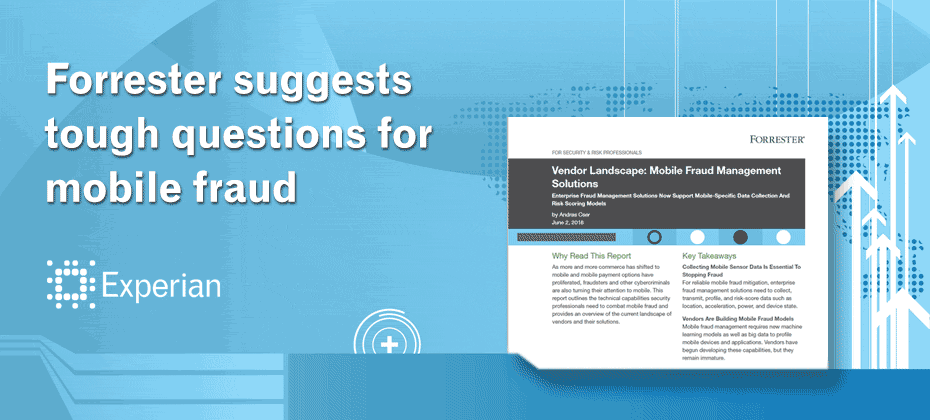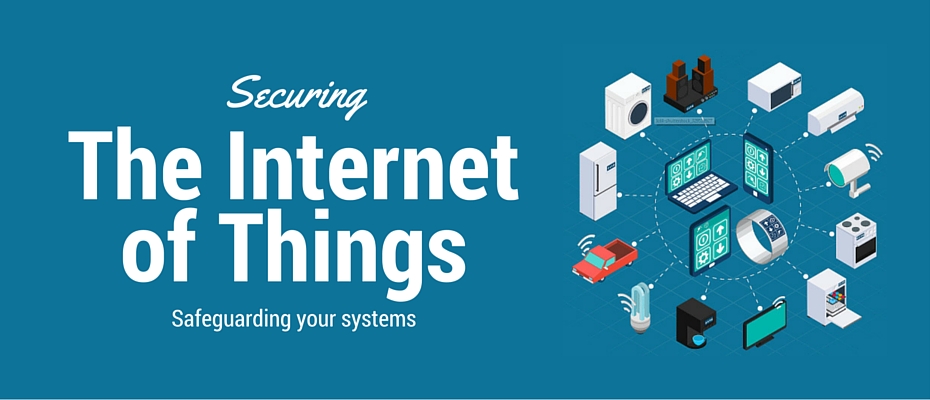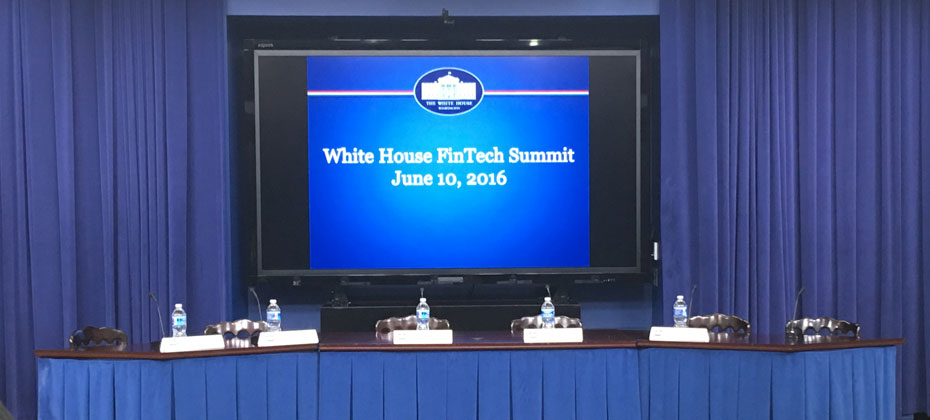Latest Posts

All customers are not created equally – at least when it comes to one’s ability to pay. Incomes differ, financial circumstances vary and economic challenges surface. Lost job. Totaled car. Unplanned medical bills. Life happens. Research conducted by a recent Bankrate study revealed just 38 percent of Americans said they could cover an unexpected emergency room visit or a $500 car repair with available cash in a checking or savings account. It’s a scary situation for individuals, and also a source of stress for the lender expecting payment. So what are the natural moments for a lender to assess “ability to pay?” Moment No. 1: When prepping for a prescreen campaign and at origination. Many lenders leverage an income estimation model, designed to give an indication of the customer’s capacity to take on additional debt by providing an estimation of their annual income. Within the model, multiple attributes are used to calculate the income, including: Number of accounts Account balances Utilization Average number of months since trade opened Combined, all of these insights determine a customer’s current obligations, as well as an estimation of their current income, to see if they can realistically take on more credit. The right models and criteria on the front-end – whether used when a consumer applies for new credit or when a lender is executing a prescreen campaign to acquire new customers – minimizes the risk for default. It’s a no-brainer. Moment No. 2: When a customer is already on your books. As the Bankrate study mentioned, sudden life events can send some customers’ lives into a financial tailspin. On the other hand, financial circumstances can change for the better too. Aggressively paying down a HELOC, doubling down on a mortgage, or wiping out a bankcard balance could signal an opportunity to extend more credit, while the reverse could be the first signs of payment stress. Attaching triggers to accounts can give lenders indications on what to do with either scenario, helping to grow a portfolio and protect it. Moment No. 3: When an account goes south. While a lender hates to think any of its accounts will plummet into collections, sometimes, it’s inevitable. Even prime customers fall behind, and suddenly financial institutions are faced with looking at collections strategies. Where should they place their bets? You can’t treat all delinquent customer equally and work the accounts the same way. Collection resources can be wasted on customers who are difficult or impossible to recover, so it’s best to turn to predictive analytics and a collections scoring strategy to prioritize efforts. Again, who has the greatest ability to pay? Then place your manpower on those individuals where you can recover the most dollars. --- Assessing one’s ability to pay is a cornerstone to the financial services business. The quest is to find the sweet spot with a combination of application data, behavioral data and credit risk scoring analytics.

Many fraud and compliance teams are struggling to keep pace with new business dynamics. Here are several of the many mobile device trends affecting business today: 35% year-over-year growth in mobile commerce from 2014-2015 Value of mobile payment transactions is forecasted to reach more than $27 billion in 2016 45% of smartphone owners use a mobile device to make a purchase every month This rapid growth only reinforces the need for aggressive fraud prevention strategies and the adoption of new technologies to prepare for the latest emerging cybersecurity threats. >> Forrester's 2016 Vendor Landscape: Mobile Fraud Management Solutions Report

His car, more than 10 years old and not worth salvaging, was in the shop again. Time to invest in something new – or at least “new-ish.” He headed to a local dealership, selected a practical model and applied for financing. “We can’t give you a loan,” said the manager. “Your income is not high enough, but perhaps if you bring in a co-signer ...” Denied. Her college degree hung on the wall of her childhood bedroom. In the months since she celebrated graduation with family and friends, she landed a job, but not one providing enough income to cover rent, a car payment and her hefty student loan payments. “I didn’t realize my payments would be so high,” said the woman. “I don’t know how I’ll ever climb out from under this debt and start my life.” Stalled. His attempt at applying for a bankcard, much needed to begin the journey of establishing credit in the country, was met with failure. “We can’t find any credit history on you,” says the lender. “Try again in the future.” Invisible. These stories are all too common in America. A lack of financial education, coupled with a few poor choices, can derail an individual’s financial trajectory. More light has certainly been shone on the topic of financial education and the importance of making smart credit decisions from a young age, but there is no nationwide financial education program offered in schools, and many parents feel ill-equipped to handle the task. Consider a few of these numbers: 71 percent of college grads recently surveyed by Experian said they did not learn about credit and debt management in college, giving their schools an average grade of “C” when it comes to preparing them to manage credit and debt after college The latest "State of Credit" revealed the average debt per consumer is $29,093 39 percent of newlyweds say credit scores is a source of stress in their marriage Money management is tough, and we expect people to just figure it out. But clearly, that’s not working. So we need to think about the world of credit differently. As Experian says, we need to treat it as a skill. We need to practice and learn and adjust. As you get better at credit, it opens doors, creates opportunities, and enables people to live the lives they wish to live. Suddenly, you can get the car loan, move out, have access to credit cards, and manage it all responsibly. In other words, you claim financial health. On the other hand, if you don’t work at this skill, a lack of financial health ensues. Unruly amounts of debt, irregular income and sporadic savings create stress, resentment and pain. Increasingly, more financial institutions are boosting efforts to educate about credit. Schools are exploring curriculum to talk finances and inject real-life money management scenarios into everyday lessons. Millennials are seeking transparency around credit transactions. The more financially healthy consumers we have in this country, building credit skills, means overall economies will grow. So yes, financial health matters. It matters to individuals, to lending institutions, to retailers and to communities big and small. Building those credit skills is essential. Your health depends on it.

Is the speed of fraud threatening your business? Like many other fraud and compliance teams, your teams may be struggling to keep up with new business dynamics. The following trends are changing the way consumers do business with you: 35 percent year-over-year growth in mobile commerce More than $27 billion forecasted value of mobile payment transactions in 2016 45 percent of smartphone owners using a mobile device to make a purchase every month More than 1 billion mobile phone owners will use their devices for banking purposes by the end of 2015 In an attempt to stay ahead of fraud, systems have become more complex, more expensive and even more difficult to manage, leading to more friction for your customers. How extensive is this impact? 30 percent of online customers are interrupted to catch one fraudulent attempt One in 10 new applicants may be an imposter using breached data $40 billion of legitimate customer sales are declined annually because of tight rules, processes, etc. This rapid growth only reinforces the need for aggressive fraud prevention strategies and adoption of new technologies to prepare for the latest emerging cybersecurity threats. Businesses must continue their efforts to protect all parties’ interests. Fraudsters have what they need to be flexible and quick. So why shouldn’t businesses? Introducing CrossCore™, the first smart plug-and-play platform for fraud and identity services. CrossCore uses a single access point to integrate technology from different providers to address different dangers. When all your fraud and identity solutions work together through a single application program interface, you reduce friction and false positives — meaning more growth for your business. View our recent infographic on global fraud trends

Every day, millions of new things get connected online, such as toasters, heart monitors and cars. Many of these things have weak security controls that create vulnerabilities in critical private networks. As more products get connected, the casual mindset about the security risks inherent in the Internet of Things must begin to change. Here are 12 tips to help safeguard your systems from the Internet of Things. >> Securing the Internet of Things

What you give, you get. At least that is what popular philosophers claim. And if you think about it, this statement is also applicable to the world of data accuracy. As organizations of all sizes increasingly rely on data to interact with customers and create insights to drive strategy, it’s no secret bad data can quickly lead a company or financial institution down the wrong path, even landing them into regulatory troubles. A recent Experian Data Quality study found: Seventy-five percent of organizations believe inaccurate data is undermining their ability to provide an excellent customer experience. Sixty-five percent of organizations wait until there are specific issues with their data before they address and fix them. Fifty-six percent of organizations believe mistakes can be attributed to human error. For years, organizations have wanted good data simply for operational efficiencies and cost savings, but now a shift has taken place where businesses are using data for nearly every aspect of their organization. The majority of sales decisions are expected to be driven by customer data by 2020, with companies determined to turn data into actionable insight to find new customers, increase customer retention, better understand their needs, and increase the value of each customer. Additionally, the Fair Credit Reporting Act (FCRA) requires those contributing data to provide accurate and complete information to the credit reporting agencies. If they fail to meet accuracy obligations when reporting negative account histories to credit reporting companies, the result could be bureau action and fines. Organizations still deal with a high degree of inaccurate data because there are a number of challenges to maintaining it. Some of them are external forces, but many are internal challenges – most notably a reliance on reactive data management strategies. The biggest problem organizations face around data management today actually comes from within. Businesses get in their own way by refusing to create a culture around data and not prioritizing the proper funding and staffing for data management. Many businesses know they need to improve their data quality, but often have a hard time defining why an investment is needed in the current structure. Solutions exist to get in front of data accuracy challenges. DataArc 360 Powered by Experian Pandora, for example, is designed to check the consumer credit information provided by data furnishers prior to submission to credit bureaus. This allows data suppliers to take more of a proactive approach to ensuring the accuracy of information, that may result in fewer credit disputes and a more positive interaction between consumers and their credit. Creating a clear governance plan, and centralizing data management policies and policies can also clean up internal challenges and improve accuracy standards. The importance of data cannot be neglected, but again, the data has to be clean for it to matter. What you give is what you’ll get.

According to a national survey by Experian, college students may be receiving their degrees, but their financial management knowledge still needs some schooling. The survey reveals some troubling data about recent graduates: Average student loan debt is $22,813 31% have maxed out a credit card 39% have accepted credit card terms and conditions without reading them Learning to manage debt and finances properly is key to young adults’ future financial success. Since students aren’t receiving credit and debt management education in college, they need to educate themselves proactively. Credit education resources are available on Experian's Website. >> Experian College Graduate Survey Report

Experian cited in Mobile Fraud Management Solutions report from Forrester as having the most capabilities and one of the highest estimated revenues in total fraud management

Experian consultant offers his recap from attending a half-day event hosted at The White House called the “FinTech Summit” largely focused on how government agencies can tap into the innovation, in which new firms are offering small-business owners and consumers faster forms of loans and digital payments. Federal regulators have been studying the industry to determine how it can be regulated while still encouraging innovation.

Part four in our series on Insights from Vision 2016 fraud and identity track It was a true honor to present alongside Experian fraud consultant Chris Danese and Barbara Simcox of Turnkey Risk Solutions in the synthetic and first-party fraud session at Vision 2016. Chris and Barbara, two individuals who have been fighting fraud for more than 25 years, kicked off the session with their definition of first-party versus third-party fraud trends and shared an actual case study of a first-party fraud scheme. The combination of the qualitative case study overlaid with quantitative data mining and link analysis debunked many myths surrounding the identification of first-party fraud and emphasized best practices for confidently differentiating first-party, first-pay-default and synthetic fraud schemes. Following these two passionate fraud fighters was a bit intimidating, but I was excited to discuss the different attributes included in first-party fraud models and how they can be impacted by the types of data going into the specific model. There were two big “takeaways” from this session for me and many others in the room. First, it is essential to use the correct analytical tools to find and manage true first-party fraud risk successfully. Using a credit score to identify true fraud risk categorically underperforms. BustOut ScoreSM or other fraud risk scores have a much higher ability to assess true fraud risk. Second is the need to for a uniform first-party fraud bust-out definition so information can be better shared. By the end of the session, I was struck by how much diversity there is among institutions and their approach to combating fraud. From capturing losses to working cases, the approaches were as unique as the individuals in attendance This session was both educational and inspirational. I am optimistic about the future and look forward to seeing how our clients continue to fight first-party fraud.

On June 2, the Consumer Financial Protection Bureau (CFPB) proposed a rule aimed at “payday lending” that will apply to virtually all lenders, with request for comments by Sept. 14. Here is a summary of the basic provisions of the proposed rule. However, with comments, the proposal is more than 1,300 pages in length, and the proposed rule and examples are more than 200 pages long. It is necessary to review the details of the proposed rule to understand its potential impact on your products and processes fully. You may wish to review your current and future offerings with your institution’s counsel and compliance officer to determine the potential impact if major provisions of this proposed rule are finalized by the CFPB. Coverage The proposal generally would cover two categories of loans. First, the proposal generally would cover loans with a term of 45 days or less. Second, the proposal generally would cover loans with a term greater than 45 days, provided that they have an all-in annual percentage rate greater than 36 percent and either are repaid directly from the consumer’s account or income or are secured by the consumer’s vehicle. Ability to repay For both categories of covered loans, the proposal would identify it as an abusive and unfair practice for a lender to make a covered loan without reasonably determining that the consumer has the ability to repay the loan. Or if the lender does not determine if the consumer can make payments due, as well as meet major financial obligations and basic living expenses during and for 30 days after repayment. Lenders would be required to verify the amount of income that a consumer receives, after taxes, from employment, government benefits or other sources. In addition, lenders would be required to check a consumer’s credit report to verify the amount of outstanding loans and required payments. “Safe Harbor” The proposed rule would provide lenders with options to make covered loans without satisfying the ability-to-repay and payment notice requirements, if those loans meet certain conditions. The first option would be offering loans that generally meet the parameters of the National Credit Union Administration “payday alternative loans” program, where interest rates are capped at 28 percent and the application fee is no more than $20. The other option would be offering loans that are payable in roughly equal payments with terms not to exceed two years and with an all-in cost of 36 percent or less, not including a reasonable origination fee, so long as the lender’s projected default rate on these loans is 5 percent or less. The lender would have to refund the origination fees any year that the default rate exceeds 5 percent. Lenders would be limited as to how many of either type of loan they could make per consumer per year. Outstanding loans The proposal also would impose certain restrictions on making covered loans when a consumer has — or recently had — certain outstanding loans. These provisions are extensive and differ between short- and long-term loans. For example: Payday and single-payment auto title: If a borrower seeks to roll over a loan or returns within 30 days after paying off a previous short-term debt, the lender would be restricted from offering a similar loan. Lenders could only offer a similar short-term loan if a borrower demonstrated that their financial situation during the term of the new loan would be materially improved relative to what it was since the prior loan was made. The same test would apply if the consumer sought a third loan. Even if a borrower’s finances improved enough for a lender to justify making a second and third loan, loans would be capped at three in succession followed by a mandatory 30-day cooling-off period. High-cost installment loans: For consumers struggling to make payments under either a payday installment or auto title installment loan, lenders could not refinance the loan into a loan with similar payments. This is unless a borrower demonstrated that their financial situation during the term of the new loan would be materially improved relative to what it was during the prior 30 days. The lender could offer to refinance if that would result in substantially smaller payments or would substantially lower the total cost of the consumer’s credit. Payments Furthermore, it would be defined as an unfair and abusive practice to attempt to withdraw payment from a consumer’s account for a covered loan after two consecutive payment attempts have failed, unless the lender obtains the consumer’s new and specific authorization to make further withdrawals from the account. The proposal would require lenders to provide certain notices to the consumer before attempting to withdraw payment for a covered loan from the consumer’s account unless exempt under one of the “safe harbor” options. Registered information systems Finally, the proposed rule would require lenders to use credit reporting systems to report and obtain information about loans made under the full-payment test or the principal payoff option. These systems would be considered consumer reporting companies, subject to applicable federal laws and registered with the CFPB. Lenders would be required to report basic loan information and updates to that information. The proposed regulation may be found here.

According to the most recent State of the Automotive Finance Market report, the total balance of open automotive loans increased 11.1% in Q1 2016, reaching $1.005 trillion — up from $905 billion in Q1 2015. This is the first time on record that automotive loans have passed the $1 trillion mark. The report also revealed that subprime loan volumes experienced double-digit growth and overall delinquencies remained low. With more consumers relying on financing, lenders should monitor credit and delinquency trends in order to adjust strategies accordingly. >>Webinar: Hear about the latest consumer credit trends

As net interest margins tighten and commercial real estate concentrations begin to slowly creep back to 2008 levels, financial institutions should consider looking to their branch networks to drive earnings. Why wouldn’t you, right? The good news is branch networks can embrace that challenge by simply using some of the tools they already have access to – most notably the credit report. Credit reports are generally seen as a tool to assist financial institutions in assessing credit risk. However, if used properly, credit reports can provide a wealth of insight on selling opportunities as well. Typically when a customer’s credit report is pulled, the personal banker or customer service representative is primarily focused on whether or not a loan application is approved based on the institution’s approval parameters. Instead, what if a lender elected to view this customer interaction as an opportunity to deepen the relationship? So, here are three ways to utilize credit reports to generate earnings through retail loan growth: 1. Opportunities to Consolidate Debt Looking for debt consolidation opportunities is probably the simplest way to mine for opportunities. For example: Personal Banker: “It looks like you also have a card credit with XYZ and ABC Bank. Based on your application, we can consolidate both of those balances into one and give you a lower interest rate.” Be specific. Tell the customer exactly how much money per month they would be able to save and the benefits of consolidation. Not to mention, debt consolidation often reduces a lender’s credit risk and enhances customer loyalty, so this is a win for the institution as well. 2. Opportunities to Provide Additional Credit Another method would be to “soft pull” a segment of your portfolio to identify customers who qualify for larger credit card balances or refinance opportunities. This strategy is best executed at the portfolio management level, as insight is needed on the bank risk appetite and concentration levels. Layering on a basic prescreen helps qualify and segment your prospect list according to your unique credit criteria. You can also expand the universe with an Experian extract list, identifying new consumers who might be open to new offers. 3. Find Hidden Opportunities Credit scoring models are not perfect. There are times when a person’s credit score does not reflect an applicant’s true risk profile. For example, a person who was temporarily out of work may have missed two to three payments during that period. A deeper scan of the credit report during underwriting may reveal an opportunity to lend to a person rebounding from financial difficulties not yet reflected by their credit score. For example, this individual may have missed two credit card payments but hasn’t missed a mortgage or car payment in 20 years. A score is just one dimension to the story, but trended insights can shine a light on who best to lend to in the future. Conclusion: With the proper tools and training, your retail team can get more out of the basic credit report and find additional opportunities to deepen customer relationships while maintaining your desired risk profile. The credit report can be a workhorse for your team, so why not leverage it for more business. Note: The information above outlines several uses for a credit report. Separate credit reports are required for each use with the intended permissible purpose. Ancin Cooley is principal with Synergy Bank Consulting, a national credit risk management and strategic planning firm. Synergy provides a rangeof risk management services to financial institutions, which include loan reviews, IT audits, internal audits, and regulatory compliance reviews. As principal, Ancin manages a growing portfolio of clients throughout the United States.

It’s more than mercury that will be up this summer. As temperatures climb, so do automotive sales, which often reach annual highs during the warmest months of the year. Fueled by pent-up demand coming out of the recession, historically low interest rates, and increased competition among both manufacturers and lenders, auto sales are continuing to be a bright spot in the U.S. economy. Summer sales spike According to recent research by Experian Automotive, 2015 sales of new non-luxury vehicles began rising in May and peaked in August at nearly 20 percent above the monthly average for the year. It is not surprising, given the number of notable manufacturer marketing campaigns that often air through the summer months, beginning with Memorial Day and running all the way through Labor Day weekend. The projection is that this trend will continue in 2016. Financing moves metal Financing continues to play an important role in facilitating new car sales. Experian research shows a consistent increase in the percentage of new vehicles sold with financing with the trend reaching a period high of 85.9 percent in Q4 2015, a 2.3 percent increase over the previous year. The increased financing, is due in part, to continued post-recession liquidity. As the economy has rebounded, lenders have re-emerged with attractive financing rates for buyers. In addition, captive lenders are continuing to support manufacturers with 0 percent subvention offers to increase sales. Total loan value is on the rise as well, reaching $29,551 in Q4 2015, a 4.1 percent increase over the previous year. Average MSRP is trending up too, but at a slower year-over-year rate of 3.6 percent. The slower growth in MSRP relative to total loan value is leading to increased loan-to-value ratios which reached 109.4 percent in Q4 2015. The increases in loan value and MSRP are putting pressure on monthly payment with average new vehicle payments reaching $493 per month on new loans in the fourth quarter. Seeking relief, consumers are turning to longer loan terms and leasing to maintain lower payments. As a result, average new vehicle loan terms ticked slightly higher to 67 months while lease penetration on new vehicles reached 28.9 percent, a 19 percent increase over the previous year. Leveraging the trends Timing is everything when it comes to auto lending. Direct mail remains an effective communication tool for lenders, but mass mailers without regard to response rates yield poor ROIs and put future campaigns in jeopardy. Targeting consumers who are most likely to be in the market at a point in time can increase response rates and improve overall campaign performance. Experian’s In the Market Model – Auto leverages the power of trended credit data to identify consumers that will be most receptive to an offer. By focusing on high-propensity consumers, lenders can conduct more marketing campaigns during the year with the same budget and achieve supercharged results. Context-based marketing allows lenders to tailor offers by leveraging insights on a consumer’s existing loans. Product offers can additionally be customized based on estimated interest rates, months remaining, or current loan balance on open auto loans. Targeted refinance offers can also be delivered to consumers with high interest rates or focus new-loan offers on consumers with minimal months or balance remaining on existing loans. Understanding current auto loans allows lenders to target offers that are relevant to their prospects and gain an advantage over the competition. Increases in loan-to-value (LTV) ratios at origination and longer loan terms are putting many consumers in deep negative equity positions. As a result, many consumers will not qualify for refinance offers without significant down payments leading to low underwriting conversion rates and poor customer experience. Lenders seeking to improve on these metrics should leverage Experian’s Auto Equity Model, which provides an estimate of the amount of equity a consumer has in their existing auto trades. Focusing refinance offers on consumers with negative equity, while suppressing those with deep negative positions, can help improve response rates while minimizing declines due to LTV requirements. Takeaways Lenders should be gearing up for the summer auto sales spike. Proactive strategies will allow savvy marketers to deploy capital and grow their portfolio by taking advantage of customer insight. Timing and context matter, and as auto sales trends reveal, now is the opportune time to optimize marketing efforts and capitalize on the season.

It’s more than mercury that will be up this summer. As temperatures climb, so do automotive sales, which often reach annual highs during the warmest months of the year. Fueled by pent-up demand coming out of the recession, historically low interest rates, and increased competition among both manufacturers and lenders, auto sales are continuing to be a bright spot in the U.S. economy. Summer sales spike According to recent research by Experian Automotive, 2015 sales of new non-luxury vehicles began rising in May and peaked in August at nearly 20 percent above the monthly average for the year. It is not surprising, given the number of notable manufacturer marketing campaigns that often air through the summer months, beginning with Memorial Day and running all the way through Labor Day weekend. The projection is that this trend will continue in 2016. Financing moves metal Financing continues to play an important role in facilitating new car sales. Experian research shows a consistent increase in the percentage of new vehicles sold with financing with the trend reaching a period high of 85.9 percent in Q4 2015, a 2.3 percent increase over the previous year. The increased financing, is due in part, to continued post-recession liquidity. As the economy has rebounded, lenders have re-emerged with attractive financing rates for buyers. In addition, captive lenders are continuing to support manufacturers with 0 percent subvention offers to increase sales. Total loan value is on the rise as well, reaching $29,551 in Q4 2015, a 4.1 percent increase over the previous year. Average MSRP is trending up too, but at a slower year-over-year rate of 3.6 percent. The slower growth in MSRP relative to total loan value is leading to increased loan-to-value ratios which reached 109.4 percent in Q4 2015. The increases in loan value and MSRP are putting pressure on monthly payment with average new vehicle payments reaching $493 per month on new loans in the fourth quarter. Seeking relief, consumers are turning to longer loan terms and leasing to maintain lower payments. As a result, average new vehicle loan terms ticked slightly higher to 67 months while lease penetration on new vehicles reached 28.9 percent, a 19 percent increase over the previous year. Leveraging the trends Timing is everything when it comes to auto lending. Direct mail remains an effective communication tool for lenders, but mass mailers without regard to response rates yield poor ROIs and put future campaigns in jeopardy. Targeting consumers who are most likely to be in the market at a point in time can increase response rates and improve overall campaign performance. Experian’s In the Market Model – Auto leverages the power of trended credit data to identify consumers that will be most receptive to an offer. By focusing on high-propensity consumers, lenders can conduct more marketing campaigns during the year with the same budget and achieve supercharged results. Context-based marketing allows lenders to tailor offers by leveraging insights on a consumer’s existing loans. Product offers can additionally be customized based on estimated interest rates, months remaining, or current loan balance on open auto loans. Targeted refinance offers can also be delivered to consumers with high interest rates or focus new-loan offers on consumers with minimal months or balance remaining on existing loans. Understanding current auto loans allows lenders to target offers that are relevant to their prospects and gain an advantage over the competition. Increases in loan-to-value (LTV) ratios at origination and longer loan terms are putting many consumers in deep negative equity positions. As a result, many consumers will not qualify for refinance offers without significant down payments leading to low underwriting conversion rates and poor customer experience. Lenders seeking to improve on these metrics should leverage Experian’s Auto Equity Model, which provides an estimate of the amount of equity a consumer has in their existing auto trades. Focusing refinance offers on consumers with negative equity, while suppressing those with deep negative positions, can help improve response rates while minimizing declines due to LTV requirements. Takeaways Lenders should be gearing up for the summer auto sales spike. Proactive strategies will allow savvy marketers to deploy capital and grow their portfolio by taking advantage of customer insight. Timing and context matter, and as auto sales trends reveal, now is the opportune time to optimize marketing efforts and capitalize on the season.